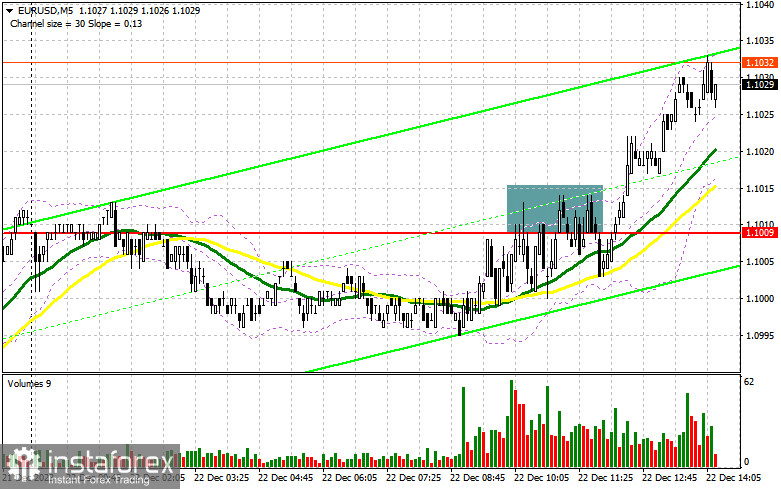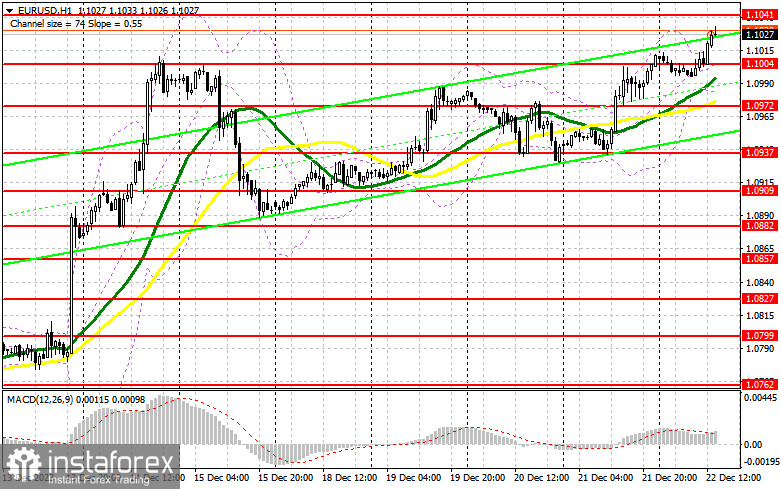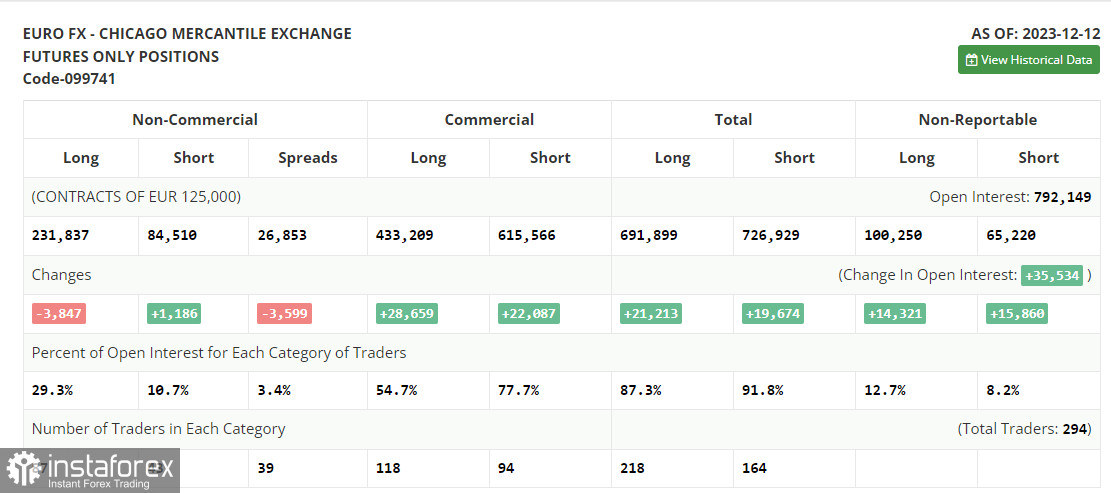In my morning forecast, I pointed out the level of 1.1009 and planned to decide to enter the market based on it. Let's look at the 5-minute chart and analyze what happened there. The rise and the formation of a false breakout led to a signal to sell the euro, but a significant downward movement did not occur. As a result, the level was broken, and the pair continued its upward trend. The technical picture was slightly revised for the second half of the day.

To open long positions on EUR/USD, the following is required:
Ahead are very important data on the core Personal Consumption Expenditure (PCE) index and changes in US consumer spending and income. This is the last of the inflation indicators for the United States that the Federal Reserve will consider this year, and it can significantly affect the further direction of the EUR/USD pair. Too rapid slowing of inflation will lead to the strengthening of the euro and the decline of the dollar, while a slight price spike may cause a good downward correction in the pair, once again not giving buyers a chance to touch the 1.1000 round figure. In case of a decline in the pair after the data, I will act only after the formation of a false breakout around the new support of 1.1004, which will allow entering the market with the target of a new rise to the area of 1.1041, which was just a little short of being tested. After breaking through and updating this range from top to bottom, I will enter a buy with the prospect of further development of the upward trend and the possibility of updating 1.1073. The ultimate target will be the new high at 1.1109, where I will take profit. In the case of a decline in EUR/USD and the absence of activity at 1.1004 in the second half of the day, we can expect a larger decline in the pair. In this case, I plan to enter the market only after forming a false breakout around 1.0972. I will consider opening long positions immediately on the rebound from 1.0937, with the target of an upward correction within the day by 30-35 points.
To open short positions on EUR/USD, the following is required:
Sellers show little activity, obviously fearing the continuation of the bullish market development. In the current situation, the most suitable scenario for me would be the formation of a false breakout around 1.1041. After receiving a signal to sell from there after the data on US inflation growth, I expect an update of the nearest support at 1.1004. After breaking through and consolidating below this range and a reverse test from bottom to top, I expect to receive another sell signal with an exit at 1.0972. The ultimate target will be the minimum at 1.0937, where I will take profit. In the case of an upward movement of EUR/USD during the American session after weak US data and the absence of bears at 1.1041, it is better to postpone sales until testing the next resistance at 1.1073. There, I will also sell, but only after an unsuccessful consolidation. I plan to open short positions immediately on the rebound from 1.1109 with the target of a downward correction by 30-35 points.

 Indicator signals:
Indicator signals:
Moving averages
Trading is carried out above the 30 and 50-day moving averages, indicating further euro growth.
Note: The author considers the periods and prices of moving averages on the hourly chart (H1) and differs from the general definition of classic daily moving averages on the daily chart (D1).
Bollinger Bands
In case of a decrease, the lower boundary of the indicator will act as support around 1.0972.
Description of indicators:
- Moving Average (MA) - determines the current trend by smoothing volatility and noise. Period 50. Marked on the chart in yellow.
- Moving Average (MA) - determines the current trend by smoothing volatility and noise. Period 30. Marked on the chart in green.
- Moving Average Convergence Divergence (MACD) - Fast EMA period 12, Slow EMA period 26, SMA period 9.
- Bollinger Bands - a volatility indicator consisting of a SMA and two standard deviations. Period 20.
- Non-commercial traders are speculators, such as individual traders, hedge funds, and large institutions, who use the futures market for speculative purposes and meet specific requirements.
- Long non-commercial positions represent the total long open positions of non-commercial traders.
- Short non-commercial positions represent the total short open positions of non-commercial traders.
- The total non-commercial net position is the difference between the short and long positions of non-commercial traders.
 English
English 
 Русский
Русский Bahasa Indonesia
Bahasa Indonesia Bahasa Malay
Bahasa Malay ไทย
ไทย Español
Español Deutsch
Deutsch Български
Български Français
Français Tiếng Việt
Tiếng Việt 中文
中文 বাংলা
বাংলা हिन्दी
हिन्दी Čeština
Čeština Українська
Українська Română
Română

